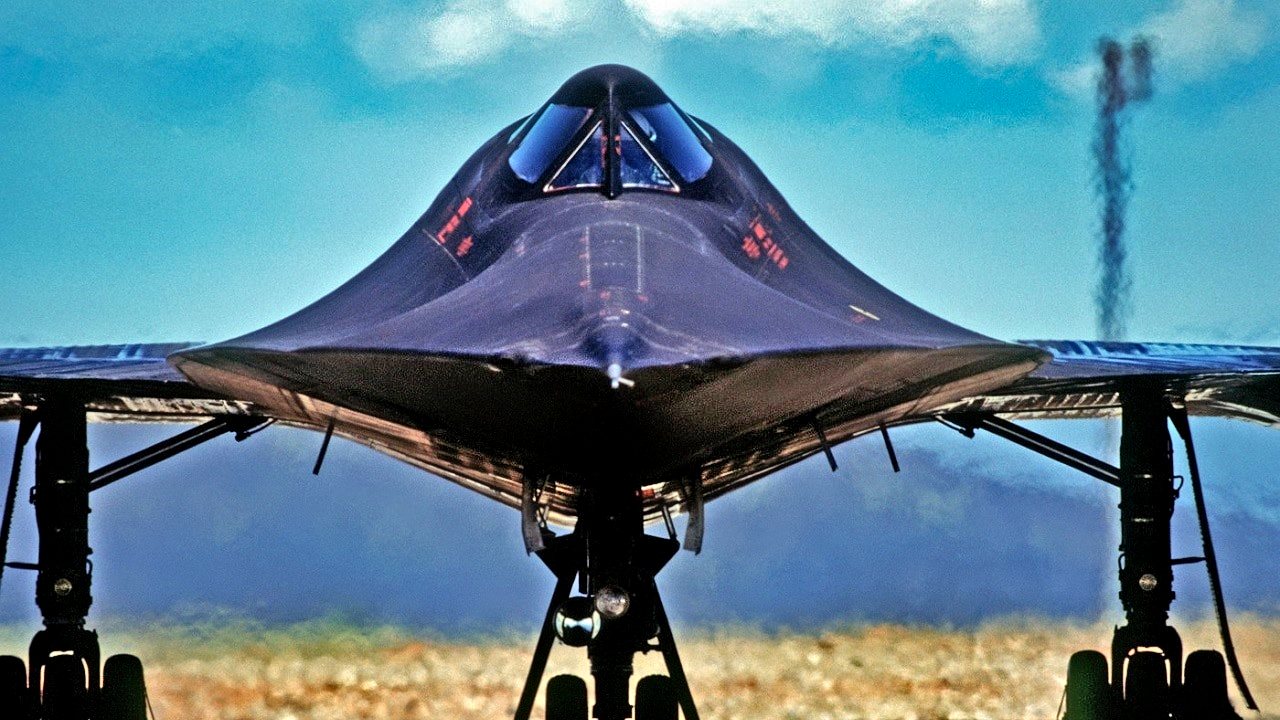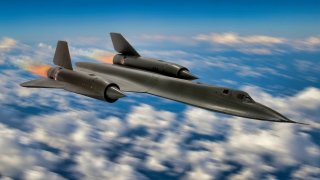SR-71 Blackbird: You Needed a Crazy Flight Suit to Take It Into the Sky
Though 32 Lockheed SR-71 "Blackbirds" were built, 11 were lost in accidents – yet not a single aircraft was shot down by the enemy. But the flight suit needed to get into this hot rod in the sky was quite something.
Though 32 Lockheed SR-71 "Blackbirds" were built, 11 were lost in accidents – yet not a single aircraft was shot down by the enemy. Of the surviving aircraft, one is now located at the Smithsonian Institution's Steve F. Udvar-Hazy Center at the Washington Dulles International Airport in Chantilly, Virginia (check out our original pictures below).
However, another piece of the aircraft's legacy can be found at the International Spy Museum in Washington, D.C.
It is an S1030 full-pressure suit, which was originally developed for use with the Lockheed A-12 "Oxcart," the reconnaissance aircraft developed at the company's Skunk Works under the direction of aerospace engineer Clarence "Kelly" Johnson that served as the basis of the SR-71. As the museum noted, while at ground level a pilot essentially would only need sunscreen, while commercial airplane pilots also don't need any special suits as the aircraft is fully pressurized.
However, the situation is far different at significantly higher altitudes.
Suit Up
The pilots flying the U-2 "Dragon Lady" wore a tight lacing suit with inflatable tubes that squeezed the wearer's body to increase circulation while a helmet provided oxygen. The A-12/SR-71 required a full-pressure suit that wasn't all that different from what an astronaut might wear. The suit was designed to provide the pilot with oxygen, pressure and temperature controls, and without it, the Spy Museum noted the pilot would be dead within a mere 15 seconds at the aircraft's maximum altitude of 85,000 feet!
The S1030 evolved from its remote ancestor, the original David Clark XMC-2-DC suit first produced in 1956, via the Pilot's Protective Assembly (PPA) model S901 worn by the first SR-71 crews. The S901 further evolved through several improved models and resulted in the S1030 suit, which was developed in the 1970s for SR-71 Blackbird operations.
There were four basic components of the S1030 full pressure, which was developed by the David Clark Company of Worcester, Mass. Each suit weighed around 35 pounds, and each individual assembly initially cost the U.S. Government in excess of $30,000. That included the helmet, a pair of gloves, the torso harness, and the main suit. It came in 12 standard sizes, and could be fitted with a parachute harness and an automatic flotation device. This suit has redundant breathing and pressure control systems and thermal protection in multiple layers, while the helmet was made of fiberglass and shaped more like an oval than a circle.
There were two different and very distinct sections of the helmet – including the primary section at the front, which provided protection to the flier's face. It was sealed tight from the back portion of the helmet by a snug neoprene face seal. It also provided a large opening that allowed for an unobstructed view.
Not Gold Plated…
In some ways, it could be said that the pilots had a "golden view."
Instead of oxygen blowing directly into the face, it flowed across the "clear" face shield, both to keep it from going directly into the pilot's eyes and also to assist in the defogging of the face shield. The face shield wasn't technically clear, as it had a minute layer of gold over the glass, which was used for the face heat system due to the fact that gold is able to conduct heat at a low temperature – thus real gold was used to keep the face shield from fogging!

What is also notable about the S1010A is that it essentially remained in service longer than the SR-71, only to be replaced by the more advanced Model S1034 Pilots Protective Assembly suit in 1996. That suit has also been adopted for use in the NASA ER-2 and WB-57F platforms.
They say a suit may make the man, but clearly, the David Clark Company's pressured suits made it possible for a man to fly at altitudes that would otherwise kill them!

About the Author
Peter Suciu is a Michigan-based writer who has contributed to more than four dozen magazines, newspapers, and websites with over 3,000 published pieces over a twenty-year career in journalism. He regularly writes about military hardware, firearms history, cybersecurity, and international affairs. Peter is also a Contributing Writer for Forbes. You can follow him on Twitter: @PeterSuciu.

